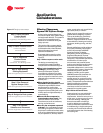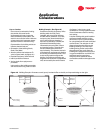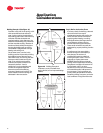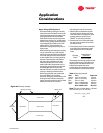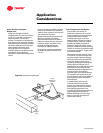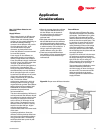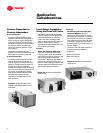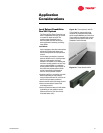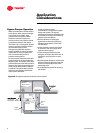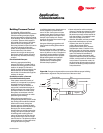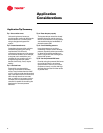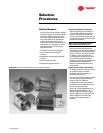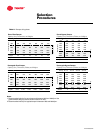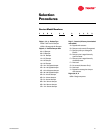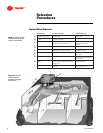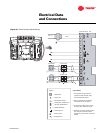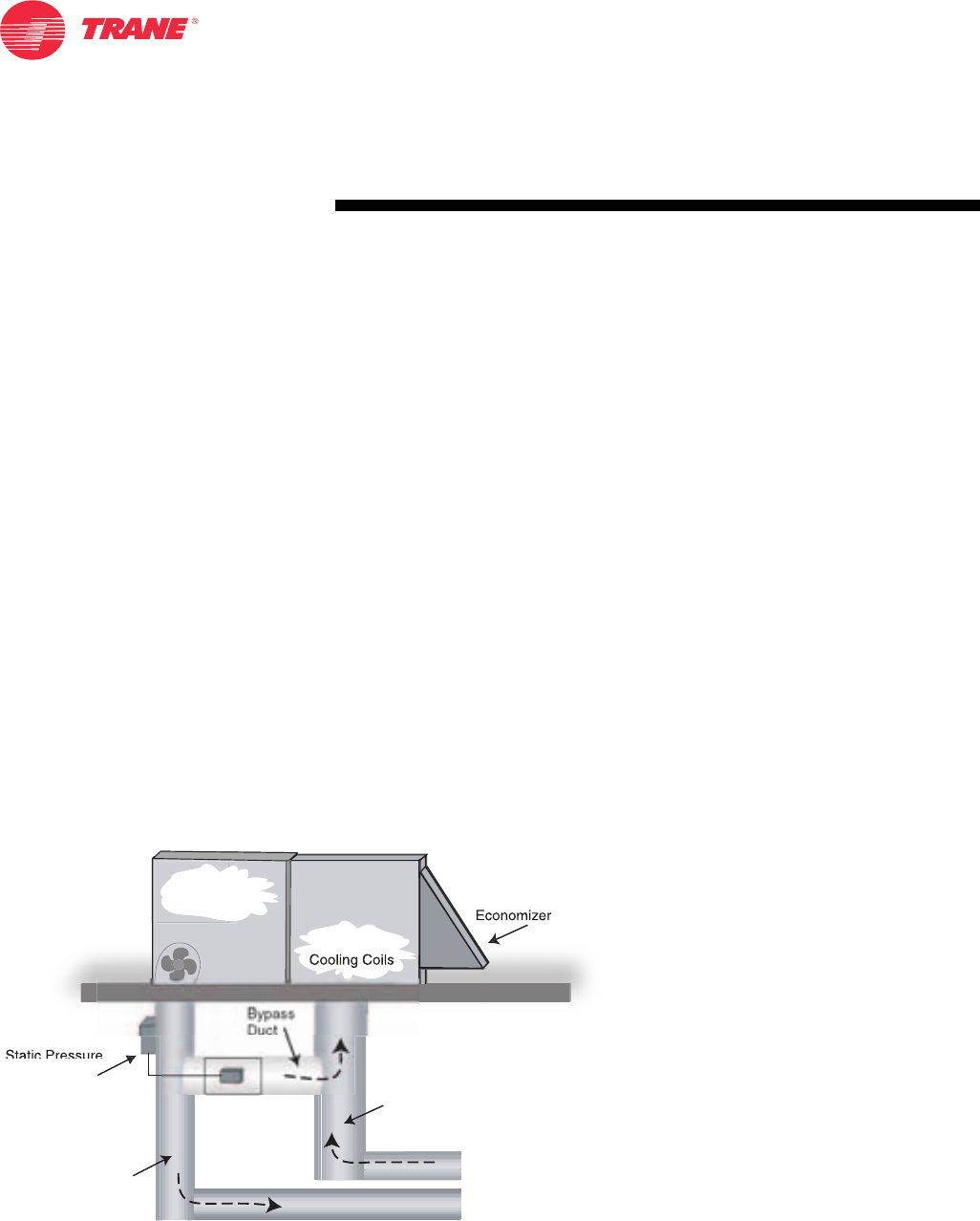
22 VAV-PRC003-EN
Application
Considerations
Figure 28. Changeover bypass variable-air-volume system
Bypass Damper Operation
When zone dampers modulate airflow
to the spaces, static pressure changes
in the supply duct system. High
pressure in a duct system creates
excessive noise and causes poor
comfort control. Low pressure results
in insufficient airflow to the spaces.
The HVAC unit in a changeover bypass
system is constant volume and does
not modulate supply airflow.
Changeover-bypass VAV systems
support variable-air-volume operation
in the zones by using a bypass duct
with a motorized damper and a
pressure-sensing device.
As duct pressure rises above the static
pressure setpoint, the bypass damper
begins to open. Conversely, when static
pressure falls below the static pressure
setpoint, the bypass damper begins to
close until the static pressure setpoint
is reached. The optimal static pressure
setpoint is automatically determined
upon system calibration.
Proper operation requires
consideration of all aspects of bypass
design and location. The bypass
dampers and ductwork should be sized
and located according to the following
general recommendations:
y Avoid turbulence by locating the
bypass two to three equivalent duct
diameters downstream of the HVAC
unit discharge.
y Locate the static pressure and supply
air sensors in the main supply duct
upstream of the bypass.
y Locate the bypass before the zone
dampers (as close to the HVAC unit as
possible) to avoid comfort or noise
issues.
y Size the bypass damper to maintain the
minimum required airflow through the
HVAC unit (usually 80 percent of the
total design cfm)
y Provide adequate access for servicing
the damper.
Supply
Air Duct
Return
Air
Duct
Ductwork
Bypass
Damper
R
e
t
u
r
n
Air
Duct
H
Heating and
Roofto
p
Micro
C
ontro
l
Static
Pressure
and Suppl
y
Tem
p
erature Sensor
s



